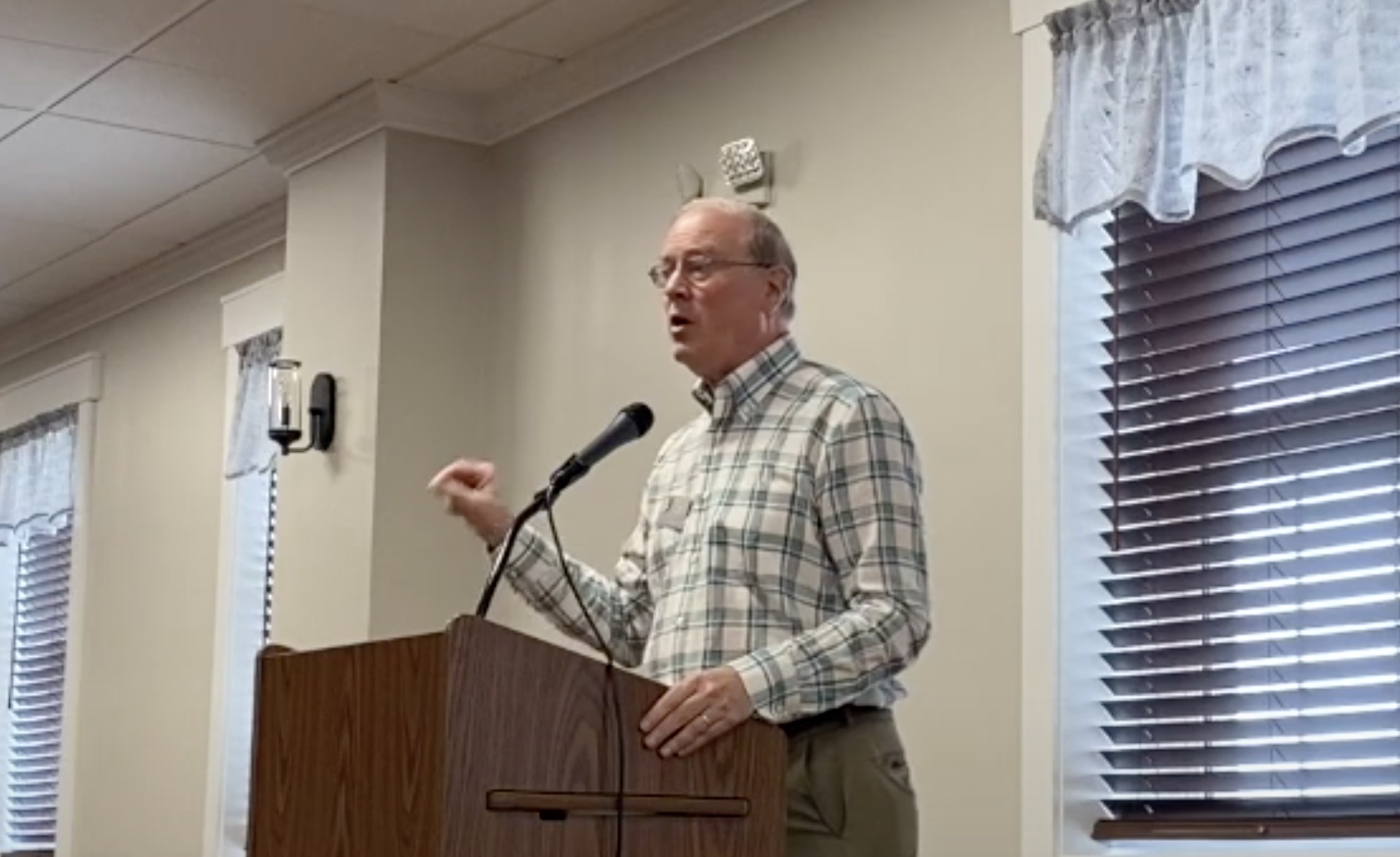
The following message was sent out by Maryland State Senator Chris West (District 42) on January 8th: (note – you can view Part 1 HERE)
Part II: Chickens Coming Home to Roost
The theme of my previous posting was that people in positions of power need to carefully consider the potential unanticipated collateral consequences of their significant public policy decisions. In that posting, I focused on the national and State response to Covid and the passage here in Maryland of the ten-year education Blueprint by the Maryland General Assembly. Both policy decisions were made by good people with the best of intentions, but the unanticipated collateral consequences of these measures have been severe. In both of these cases, chickens have come home to roost.
The inflation which followed in Covid’s wake has left all of us grappling with much higher prices, and the loss of three semesters of education for many of our students has prejudiced their successful development. Meanwhile, the Blueprint has saddled our school systems with timetables that can’t be met, with draconian penalties in the offing. The Blueprint’s promise that in just ten years, Maryland would have the best schools in the world at this point seems to have been foolish and unattainable, given that in the four years since the Blueprint was enacted, the annual Report Cards measuring the quality of education in Maryland show that our schools have significantly deteriorated, not improved.
But let’s move on and discuss Maryland’s business climate. Can anyone recall the last time the Maryland General Assembly passed a bill designed to genuinely help and promote Maryland small businesses? Instead, year after year, laws are passed over the objections of the business community that the new laws will hurt Maryland businesses and make them less competitive with businesses in neighboring states. For example, on New Years Day, Maryland’s $15 an hour minimum wage went into effect even though the minimum wage in Virginia is only $12 an hour, in West Virginia is only $8.75 an hour and in Pennsylvania is only $7.25 an hour. To take another example, last year, the General Assembly passed a law requiring most Maryland businesses to provide their employees with up to 12 weeks (up to 24 weeks under certain circumstances) of paid leave due to certain personal and family circumstances. The price tag of this law to Maryland businesses and their employees is estimated to be $1.6 Billion. I could cite many other examples of legislation harmful to Maryland’s businesses dating back to when I joined the General Assembly in 2015.
This week, the Comptroller of Maryland issued a lengthy report detailing the economic condition of Maryland. It showed that since 2016, Maryland’s economy has only grown 1%, compared to 5.3% for Virginia. In the past seven years, employment in Maryland has grown a mere 1%. The Comptroller’s report attributes these lamentable statistics to a lack of private sector growth in Maryland. In short, our neighboring states have moved ahead while in Maryland, our small businesses have stagnated. After years of short-sighted policies hurting our small businesses, it is now clear that the chickens are coming home to roost. Governor Moore has acknowledged this situation. In an interview with the Washington Post, he characterized the Maryland economy as “lazy” and “lackluster”. Unfortunately, he failed to pin the tail on this donkey and call out years of anti-business legislation as a large part of the problem.
Returning now to the Blueprint, in my last posting I deferred discussing its cost, but the statutorily enacted $32 Billion price tag of the Blueprint is now looming over us. The cost was intentionally back-loaded so that it would be quite modest and manageable in the early years but would rapidly ramp up in the out years. We are now entering the out years.
I can easily recall the proponents of the Blueprint offering reassuring statements to the effect that the first three years of the Blueprint were “already paid for”. For legislators facing a general election in 2022, these statements “greased the skids” of passage because they made it clear that no tax increase to pay for the Blueprint would need to be considered before the 2022 election. But now the chickens are coming home to roost.
The Blueprint contains no funding mechanism. Former Budget Secretary David Brinkley, who was a member of the commission that developed the Blueprint, predicted that to pay for its astronomical $32 Billion cost would require a 39% increase in personal income taxes, an 89% increase in the State sales tax and a 535% increase in property taxes. Unless some alternative can be found, we have these sorts of massive tax increases to look forward to.
In large part due to expenses mandated by the Blueprint, the projected State Budget deficit this year is over Three-Quarters of a Billion Dollars. In each subsequent year it continues to rise until in FY2028, it exceeds $2 Billion, and in FY2029, it nears $3 Billion. The chickens are really going to come home to roost as we confront the need to balance the State budget in upcoming years.
But that’s not all. In 2022, over my opposition, the General Assembly passed the so-called “Climate Solutions Now Act”. I use the term “so-called” because in his explanation of this bill on the floor of the State Senate, the floor leader was quick to disabuse legislators of any expectation that this bill would have any effect whatsoever on the climate of the planet Earth. It won’t. The bill puts into law a requirement that the State of Maryland reduce its greenhouse gas emissions by 60% from 2006 levels by 2031. Once again, no cost to State taxpayers was disclosed by the proponents of the bill. But just two weeks ago, a commission studying the implementation of this law issued a report stating that in order to comply with the law, the State must commit to spend “at least $1 Billion annually” between now and 2031. So, in order to comply with the “Climate Solutions Now Act”, the State Budget deficit projections must be reworked to show a deficit of $1.75 Billion this year, in excess of $3 Billion in FY2028 and nearly $4 Billion in FY2029.
But that’s not all either. This past summer, Governor Moore proudly announced that the State will build the “Red Line” mass transit system from western Baltimore County through the center of Baltimore City to eastern Baltimore County. Famously, Larry Hogan had cancelled this project, calling it a “boondoggle”. It involved boring a multi-Billion dollar, five-mile tunnel under downtown Baltimore, something akin to Boston’s “Big Dig” of 25 years ago, which notoriously ran hellaciously over budget and disrupted downtown Boston for many years. Governor Moore has not stated how much his Red Line will cost, but it will certainly be in the Billions of dollars.
Further, as I write this posting, I am looking at Friday morning’s Baltimore Sun’s front page, which breathlessly announces that the State of Maryland has agreed to take over Pimlico Racetrack and plans to spend in the range of $400 Million to refurbish the track and construct an ancillary training facility.
Now many of these super-expensive projects are commendable, at least in conception. Who can possibly oppose better education for our children or a more healthy environment? The problem, of course, is that, as my father used to say, money doesn’t grow on trees, and we all have to prioritize our spending and keep it within the bounds of what we can afford. That hasn’t happened in recent years as the Maryland General Assembly routinely signs on to the agenda of progressive activists.
To summarize, it would appear as though, because of financial commitments made without regard to where the money to pay for them is going to be found, the State of Maryland will be facing aggregate Budget deficits in the next ten years approaching $50 Billion. None of this was planned by the well-intentioned legislators who committed the State to these projects. The costs fall into the category of unanticipated collateral consequences, but they are inescapable unless legislators decide to amend or rescind applicable laws.
Some progressive legislators have recently been heard calling for higher taxes on the wealthy to pay for these projects. That won’t work. Maryland’s population is already declining as more and more people move to other states. Last year, nearly 31,000 more Marylanders left the State than moved here. The state where more of them are moving than anywhere else is Florida, which happens to not have a state income tax or, for that matter, an estate tax. Other significant destinations for Marylanders looking for a new home are North and South Carolina, Texas and Virginia. Any attempt to solve our budgetary problems by soaking the rich would just inspire tens of thousands more wealthy Marylanders to decamp for more friendly states. We could even arrive at a situation in which raising taxes actually produces less revenue for the State because so many people decide to leave Maryland as a response to the higher taxes.
Because of General Assembly votes in recent years giving progressive activists everything they want without paying attention to future costs, the State of Maryland is now in a very serious budgetary pickle, and the problem will only worsen in each future year. This will produce a lot of angst this year as resourceful legislators try to dial things back while the activists fight valiantly to preserve their hard-won legislative victories. It will make for a very interesting legislative session.
-Chris
###
Follow the Carroll County Observer on all of our social media channels to keep up to date with the latest information for our community.
- https://facebook.com/CarrollObserver
- https://tiktok.com/@carrollobserver
- https://twitter.com/CarrollObserver
- https://instagram.com/carrollobserver/
- https://youtube.com/@carrollobserver
- https://truthsocial.com/@carrollobserver
- https://rumble.com/c/c-4218154






